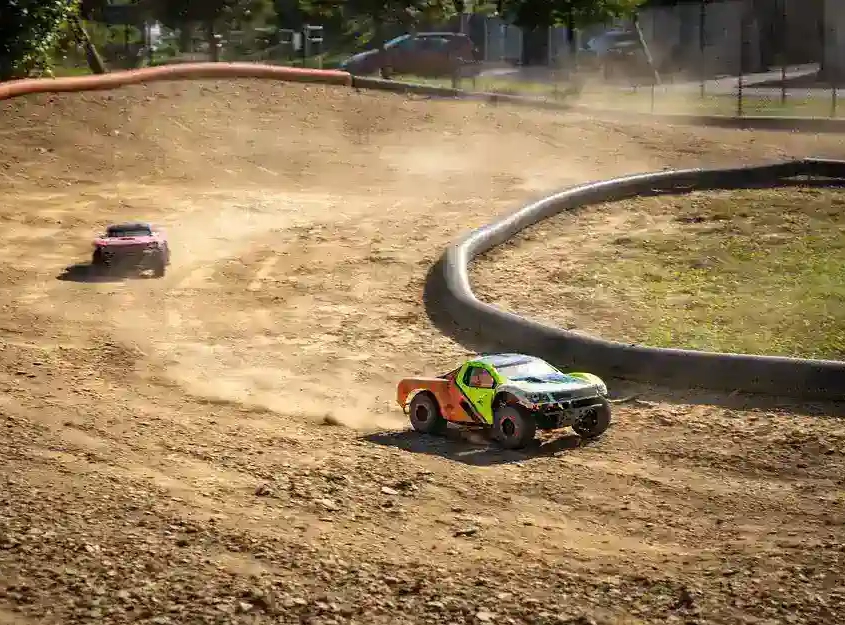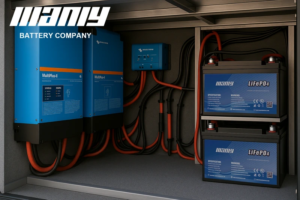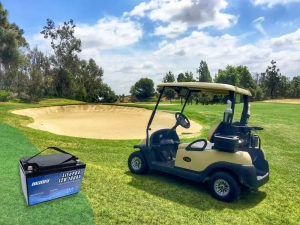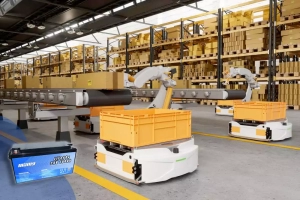Introduction of Toy Cars: Power Wheels & RC Cars
Table of Contents
- Introduction of Toy Cars: Power Wheels & RC Cars
- What Is Power wheels
- What's the Difference Between 12v and 24v Ride On Car
- Can Power Wheels Get Wet
- Guide for Picking the Best Power Wheels Battery
- How Long Does a Power Wheel Battery Last
- What Is RC Car
- What Are the Best RC Cars for Beginners
- Types of RC Car Batteries
- How to Charge RC Car Battery
- MANLY Battery: Your Best Battery Supplier for Toy Cars
What Is Power wheels
Have you ever wondered about those cool toys that kids zoom around in, looking as stylish as a grown-up in a real car? These are called power wheels, and they're a hit among children of various ages. Dive into this guide to get a comprehensive overview of these fun toys.What are Power Wheels?
Power wheels, also widely known as ride-on toys, captivate young hearts worldwide. From scooters to trikes, balance bikes, and even electric mini motorbikes - if a child can ride on it, it's part of the power wheels family.Zoom into Power Wheels Cars
Among all types of power wheels, cars take the crown for being the most adored. Not only are they designed to mirror actual vehicles, but they often take on creative twists. Some resemble jungle animals, while others may have a futuristic or space theme.Some renowned car brands have their mini counterparts in the power wheels world. This includes names like Mercedes-Benz, BMW, Audi, Volkswagen, Porsche, Ford, Bentley, Bugatti, Lamborghini, Land Rover, and MINI.What's the Difference Between 12v and 24v Ride On Car
Shopping for a power wheel for your young one? Before you click that 'Buy Now' button, it's essential to understand the difference between the two popular power wheel voltages: 12V and 24V. Here's a quick guide to help you make an informed choice.Understanding 12V Power Wheels:
Recommended Age: Suitable for children aged 4 to 6. Top Speed: These power wheels offer speeds of 3-5 miles per hour. Terrain Versatility: 12V power wheels shine when it comes to versatility. Unlike their 6V counterparts, they can cruise over both flat and rough terrains, making them perfect for backyard adventures on low-cut grass. Why 12V?:- Popularity: A significant number of power wheels operate on a 12V system. The main reason? Most components are designed to run on this voltage. Even in RVs, essentials like refrigerators and lights function on 12V.
- Ease of Charging: Most alternators provide 12V, simplifying the battery charging process.
- Efficiency: They're perfect for low-power applications and short wire distances. Plus, you only need a single battery to power them up.
Unraveling the 24V Power Wheels:
Recommended Age: Best for older kids, typically between the ages of 7 and 8. Top Speed: These are more powerful, boasting speeds of 4-6 mph. Terrain Mastery: A 24V power wheel isn't just confined to flat terrains. It's a trooper on grass, gravel, and other surfaces. Thanks to the rubber wheels, these power wheels offer enhanced traction and control. Why 24V?:- Wire Efficiency: With a 24V system, you can utilize thinner wires, thanks to the reduced current. This means less expense and less space consumed, especially crucial when you have longer wire routes.
- Voltage vs. Current: Ever wondered how high voltage can mean a thinner wire? It's simple. Higher voltage needs lesser current to produce the same power. This is why we can use wires twice as thin for a 24V circuit compared to a 12V one. Think of power lines—they operate at towering voltages so that the cables can be smaller while transmitting substantial power.

Can Power Wheels Get Wet
Power wheel toys for youngsters are not just toys; they're an outdoor adventure waiting to happen. These cars promise the thrill of a drive, combined with the freedom of the great outdoors. But like any adventure, sometimes rainclouds gather. What do you do then? Here's everything you should know about using and maintaining your kids' power wheels in wet conditions.Rainy Days and Power Wheels: Do They Mix?
Let's set the record straight: Kids' power wheels shouldn't be drenched. While it's okay for kids to cruise in their cars during brief spells of drizzle, prolonged exposure to wet conditions is a no-go.Why the caution? The insides of these cars house intricate electrical components. If water seeps in, it could lead to rusting, short-circuits, or even mold growth. The result? A non-functioning toy car and a very disappointed child.Now, you might wonder if occasional rain exposure is alright, given that many of these cars come with sturdy battery compartments. And while it's true that most are designed to handle a splash or two, continuous exposure to heavy rain can be detrimental. Remember, these cars are water-resistant, not waterproof.Is Outdoor Storage a Good Idea?
Parking your kids' power wheels outdoors isn't advisable. Even if a car survived a rainy episode, consistent exposure can weaken the battery over time. Waterlogged batteries can be more than just a minor inconvenience; they can spell danger.If outdoor storage becomes a necessity, take precautions:- Use a Waterproof Cover: If the car must be outside, shield it with a good-quality waterproof cover.
- Bring the Battery Inside: Never leave the battery exposed. Storing it indoors can prevent unwanted damage.
- Choose Shady Spots on Sunny Days: While sunlight seems harmless, continuous UV exposure can wear out your toy. Plus, batteries don't bode well with excessive heat.
Guide for Picking the Best Power Wheels Battery
Searching for the ideal battery for your child's power wheels? Picking the right one not only maximizes fun but also ensures safety. Here's a simplified breakdown to help you make the perfect selection.1. Compatibility is Key:Always double-check if the battery is a match for your power wheels model. Refer to user manuals or product listings to find details on suitable battery types and sizes.2. Gauge the Voltage and Capacity:Depending on your child's age and driving prowess, select either a 12V or 24V battery. It's vital to pick the right voltage for smooth rides.3. Brand Matters:Trustworthy brands like MANLY are typically a good bet. They have a reputation for delivering long-lasting and dependable batteries.4. Type of Battery:While traditional lead-acid batteries are commonly used, lithium-ion batteries are the newer kids on the block. Weigh the pros and cons of each before deciding.5. Size it Up:Physical dimensions are crucial. The battery should snugly fit into the power wheels' battery compartment without the need for tweaks or alterations.6. Charging Considerations:Some batteries juice up faster than others. Depending on your usage patterns, you might want to opt for a battery with quicker charging times.7. Safety First:Opt for batteries equipped with safety features, especially overcharge protection. This ensures a safer playtime for your child and longevity for the battery.8. Hear it from the Users:Always peruse customer reviews. They provide a window into the battery's real-world performance. Recommendations from fellow power wheels enthusiasts can be golden.Final Thoughts: A top-notch power wheels battery will enhance your child's playtime experience and ensure it's a safe one. By taking into account the above factors, you're well on your way to making a choice that delivers both fun and safety in spades. Happy driving to your little one!How Long Does a Power Wheel Battery Last
Ride-on toys have zoomed their way into kids' hearts, becoming an absolute favorite. Many parents delight in gifting various models, especially popular ones like the ride-on Jeep or truck. The excitement these toys spark in children is genuinely unparalleled. Plus, did you know? Some even race at speeds as high as 5 mph!Battery Life: How Does it Measure Up?
When it comes to ride-on motorcycles, many wonder how their battery life stacks up against the typical 30-minute standard of other battery-driven toys. Dive in as we explore safety measures, proper charging techniques, and battery duration.Safety Essentials for Your Power Wheels
Safety and longevity go hand-in-hand when it comes to Power Wheels toys. To reap maximum joy from your ride-on toy, it's vital to:- Build Quality: Rest assured, Power Wheels toys are crafted with care and precision. Take the Dune Rider, for instance. Its robust steel body ensures durability and safety.
- Battery Care: One of the primary safety steps involves the battery. After charging, it's essential to securely fit the battery in the toy. A loose battery poses risks, especially if the toy overturns.
- No DIY Modifications: Tinkering with the toy's hardware or electrical system is risky. Such changes can cause fires or damage the toy's circuitry. Also, mixing and matching battery types or chargers is a strict no-no as it may lead to hazardous situations.
Your Safety Checklist:
- Inspect the battery and charger for any wear regularly.
- Post playtime, the motor may be hot. Approach with caution.
- Handle the battery without gripping its wires.
- Keep youngsters away from both the battery and charger.
- Always opt for genuine Power Wheels parts. DIY might be tempting but it's safer to stick to the originals.
Battery Duration: What to Expect?
As a parent, understanding battery life aids in setting playtime expectations. Battery life can span anywhere between 45 to 90 minutes. This duration hinges on several factors:- The model of the Power Wheels toy.
- The weight of the young rider.
- The terrain.
- The chosen speed setting.
What Is RC Car
Thinking of getting a remote control car? Whether it's a treat for yourself or a delightful gift for your child, there's a whole exciting world of RC cars waiting for you. The RC car market has expanded hugely, offering a vast array of options. With choices like the speedy RC drag car to the versatile RC Truggy, finding the perfect fit might seem daunting. But fear not! Let's break down the popular types of RC cars available, making your decision-making process a breeze.Types of RC Car
Venturing into the fascinating realm of remote control cars? With their surge in popularity, there's an assortment of RC car types available today. From sleek racers like the RC drag car to rugged all-terrain beasts like the RC Truggy, each offers unique thrills. If you're on the fence about which type to dive into, here's a brief guide to help you zoom into the right decision.1. RC Touring Cars: Your ideal companion for smooth terrains! These on-road vehicles, aptly called touring automobiles, are perfect for surfaces like asphalt, concrete, or carpets. Boasting a four-wheel independent suspension system, RC Touring cars have both upper and lower control arms. Their chassis, designed with dual decks, ensures no bending. Rubber tires are often the preferred choice for enthusiasts for these cars.2. RC Buggies: Craving some off-road adventures? RC Buggies are versatile all-terrain vehicles. From gravel to muddy terrains, these cars can handle it all. Notable features include long shock absorbers and slimmer tires than their monster truck counterparts. If versatility is your goal, this one's a keeper.3. RC Crawlers: Scaling rocky terrains or make-believe mountainous landscapes is a breeze for RC Crawlers. Tailored for climbing, their strength lies in navigating uneven surfaces, especially gravel. Their modest speed is an asset when precision control is essential on challenging terrains.4. RC Drag Cars: For those with a need for speed, RC Drag Cars are racing royalty. As drag racing grows within the RC community, these cars become the go-to for enthusiasts looking for both speed and aesthetics. Their sleek design and rapid acceleration make them a racing lover's dream.5. RC Truggy: Merging the best of buggies and monster trucks, the RC Truggy is an off-road champion. It borrows its tires from monster trucks while keeping the frame of a buggy. Their speed spectrum places them as one of the faster off-road choices and a formidable on-road contender.What Are the Best RC Cars for Beginners
Diving into the world of remote control (RC) cars? It’s not just about the thrill; it's about making the right pick for the best beginner experience. Here’s a simplified guide on the key features you should look out for:1. Seek Value in Ready-to-Drive Models
- Ready-to-Run (RTR) Over Kits: While kits give you the experience of building, RTR models get you driving faster. They're pre-assembled, often painted, and come with most of the accessories.
- What's Included: Top-notch brands like ARRMA, Losi, and Axial have more RTR options. The best ones include crucial accessories like the motor and radio equipment. Sometimes, you might need to get batteries or chargers separately.
- Size Matters: For beginners, 1/10 scale RC cars are a sweet spot. They're sizable (not too big or too small) and offer speeds around 20-30 MPH. Anything bigger, like 1/5 scale, might be more challenging to manage and pricier.
2. Durability is Key
- Hobby-Quality vs. Toy-Grade: Unlike toy-grade RCs found in regular stores, hobby-quality cars are robust, with aluminum and composite parts designed for endurance.
- Bashers Over Racers: For a newbie, 'bashers' are your best bet. While racers are built for speed, bashers are designed for durability. They can handle a lot more rough and tumble, making them perfect for beginners still getting the hang of controlling their RC car.
3. Prioritize Ease of Operation
- Drive Options: While 4WD vehicles have more parts, they're generally easier to control than their 2WD counterparts. If you’re opting for an RTR, the parts aspect isn’t a significant concern.
- Power Source: Electric cars are beginner-friendly. They're clean, quiet, and low maintenance. Though gas models offer a realistic feel, they can be noisy and need more care. If you're going electric, a brushed motor is affordable, but if speed excites you and you can stretch your budget a bit, go brushless.
- Control Features: Some transmitters come with throttle limiting features. This allows beginners to start with reduced motor power and gradually unlock its full potential as their skills grow.

Types of RC Car Batteries
Batteries are the heartbeat of any RC car. Even in nitro-powered models, batteries are crucial to power the receiver and servos. While one can dive deep into battery tech intricacies, it's not necessary for most RC enthusiasts. Let's simplify things and get you up to speed on the essentials.1. Main Battery Types: NiMH vs. LiPo
RC cars primarily run on two battery types: Nickel-Metal Hydride (NiMH) and Lithium Polymer (LiPo).- NiMH Batteries:
- Often found in ready-to-run (RTR) models.
- Durable and affordable.
- Heavier than LiPo batteries with a similar voltage and capacity.
- Over time, the power drains, causing the RC car to slow down gradually.
- LiPo Batteries:
- Typically sold as add-ons but can also come with some RTR models.
- Lighter in weight, enhancing car performance.
- Retains steady voltage for the majority of the run, then drops rapidly towards the end.
- Pricier than NiMH but prices are becoming more competitive.
- Requires specific maintenance for safe usage and longevity.
2. Decoding Battery Specs: Capacity & Voltage
When browsing batteries, two critical aspects to look at are capacity (how long your car runs per charge) and voltage (determining speed and power).- Capacity (mAh):
- The number on the battery, such as 3300, 4000, or 5000, represents its capacity in milliamp hours (mAh).
- The higher the mAh, the longer your car runs. For instance, a 5000mAh battery can sustain a 5-amp load for an hour. A 6000mAh battery can maintain a 6-amp load for an hour.
- Voltage:
- It's crucial to ensure the battery voltage is compatible with your RC car. Overloading can damage your vehicle.
- NiMH batteries usually have six or seven cells, labeled as “6-cell” or “7-cell” or by voltage (7.2V or 8.4V).
- LiPo batteries differ. A single LiPo cell delivers 3.7V. Common configurations include 2-cell, 7.4V packs, and 3-cell, 11.1V packs. Ensure to check your RC specs before selecting a voltage.
How to Charge RC Car Battery
Navigating the world of RC car batteries can be a bit challenging, especially when it comes to charging. Let's delve into the two main types of batteries: Nickel-Metal Hydride (NiMH) and Lithium Polymer (LiPo), and understand the best charging methods for each.1. Charging Nickel-Metal Hydride (NiMH) Batteries
- Example Equipment:
- Charger: TORNADO RC A3Pro 2amp NiMH & LiPo/LiFe Balance Charger
- Battery: TORNADO RC 2400mAh 7.2v NiMH Stick Pack Tamiya
- Steps to Charge:
- Connect the battery stick to the Tamiya-style connector.
- Plug your charger into a 240-volt outlet.
- Press and hold the NiMH button until the light begins to flash.
- Once the light stops flashing, your batteries are good to go!
2. Powering Up with Lithium Polymer (LiPo) Batteries
- Example Equipment:
- Charger: TORNADO RC A3Pro 2amp NiMH & LiPo/LiFe Balance Charger
- Battery: NINESTEPS 4200mAh 7.4V 50C 2 Cell LiPo Battery Round Hard C
- Steps to Charge:
- Connect the battery's balance port to the smaller port of your charger.
- Press and hold the LiPo button until the charging light activates.
- Once the light ceases to flash, your battery is fully charged.




















